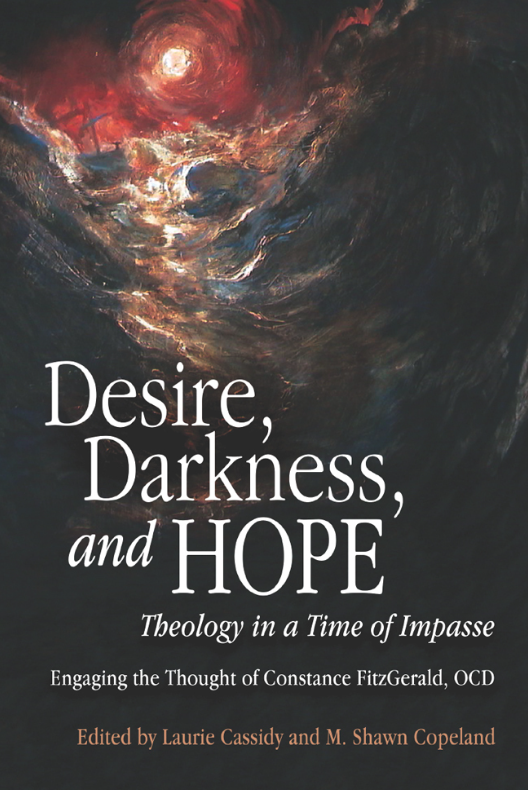Fr. Brown’s Fall 2023 Reading List
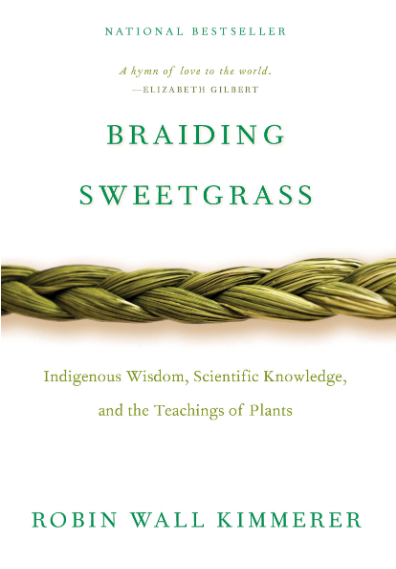
Braiding Sweetgrass: Indigenous Wisdom, Scientific Knowledge and the Teachings of Plants
As a botanist, Robin Wall Kimmerer has been trained to ask questions of nature with the tools of science. As a member of the Citizen Potawatomi Nation, she embraces the notion that plants and animals are our oldest teachers. In Braiding Sweetgrass, Kimmerer brings these two lenses of knowledge together to take us on “a journey that is every bit as mythic as it is scientific, as sacred as it is historical, as clever as it is wise" (Elizabeth Gilbert).
Drawing on her life as an indigenous scientist, and as a woman, Kimmerer shows how other living beings―asters and goldenrod, strawberries and squash, salamanders, algae, and sweetgrass―offer us gifts and lessons, even if we've forgotten how to hear their voices. In reflections that range from the creation of Turtle Island to the forces that threaten its flourishing today, she circles toward a central argument: that the awakening of ecological consciousness requires the acknowledgment and celebration of our reciprocal relationship with the rest of the living world. For only when we can hear the languages of other beings will we be capable of understanding the generosity of the earth, and learn to give our own gifts in return.
Desire, Darkness, and Hope: Theology in a Time of Impasse
For some decades, the work of Carmelite theologian Constance FitzGerald, OCD, has been a well-known secret, not only among students and practitioners of Carmelite spirituality, but also among spiritual directors, spiritual writers, retreatants, vowed religious women and men, and Christian theologians.
This collection sets out to introduce the work of Sister Constance to a wider and more diverse audience–women and men who seek to strengthen themselves on the spiritual journey, who yearn to deepen personal or scholarly theological and religious reflection, and who want to make sense of the times in which we live. To this end, this volume curates seven of Sister Constance’s articles with probing and responsive essays written by ten theologians.
Fighting to Breathe: Race, Toxicity, and the Rise of Youth Activism in Baltimore

Industrial toxic emissions on the South Baltimore Peninsula are among the highest in the nation. Because of the concentration of factories and other chemical industries in their neighborhoods, residents face elevated rates of lung cancer and other respiratory illnesses in addition to heart attacks, strokes, and cardiovascular disease, all of which can lead to premature death. Fighting to Breathe follows a dynamic and creative group of high school students who decided to fight back against the race- and class-based health disparities and inequality in their city. For more than a decade, student organizers stood up to unequal land use practices and the proposed construction of an incinerator and instead initiated new waste management strategies. As a Baltimore resident and activist-scholar, Nicole Fabricant documents how these young organizers came to envision, design, and create a more just and sustainable Baltimore.
Hope Matters: Why Changing the Way We Think is Critical to Solving the Environmental
Crisis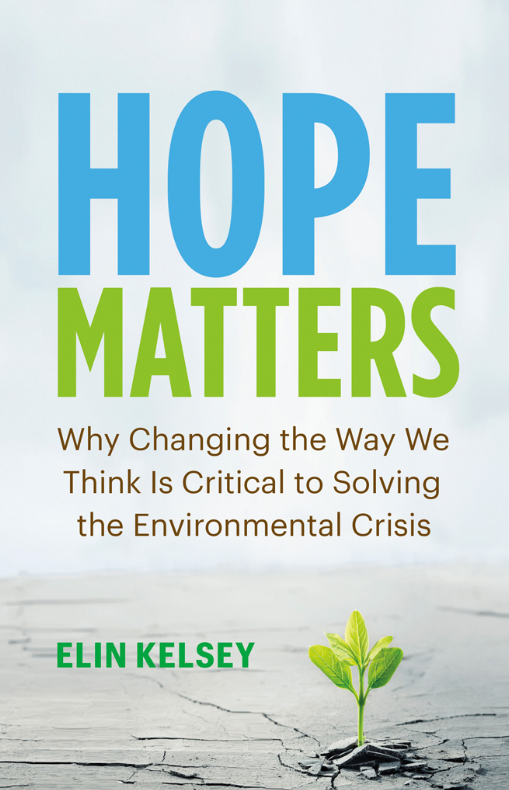
Fears about climate change are fueling an epidemic of despair across the world: adults worry about their children’s future; thirty-somethings question whether they should have kids or not; and many young people honestly believe they have no future at all.
In the face of extreme eco-anxiety, scholar and award-winning author Elin Kelsey argues that our hopelessness—while an understandable reaction—is hampering our ability to address the very real problems we face. Kelsey offers a powerful solution: hope itself.
Hope Matters boldly breaks through the narrative of doom and gloom to show why evidence-based hope, not fear, is our most powerful tool for change. Kelsey shares real-life examples of positive climate news that reveal the power of our mindsets to shape reality, the resilience of nature, and the transformative possibilities of individual and collective action. And she demonstrates how we can build on positive trends to work toward a sustainable and just future, before it’s too late.
Into the Silent Land: A Guide to the Christian Practice of Contemplation
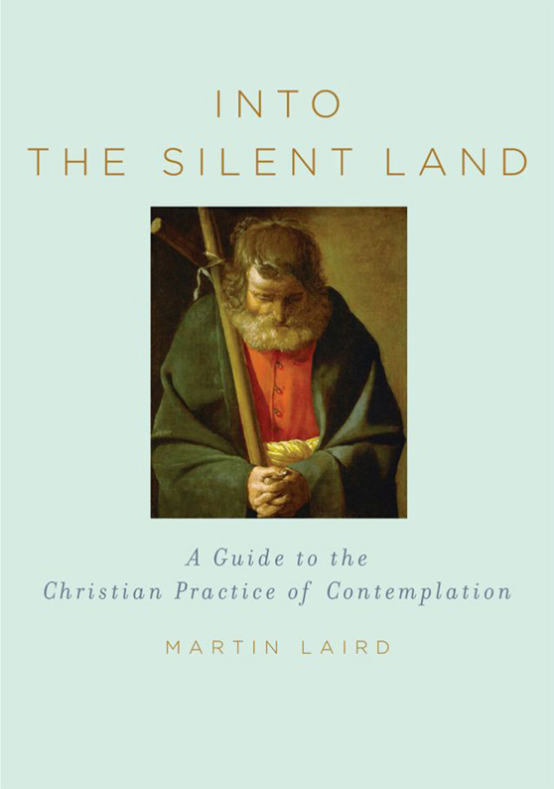
Sitting in stillness, the practice of meditation, and the cultivation of awareness are commonly thought to be the preserves of Hindus and Buddhists. Martin Laird shows that the Christian tradition of contemplation has its own refined teachings on using a prayer word to focus the mind, working with the breath to cultivate stillness, and the practice of inner vigilance or awareness. But this book is not a mere historical survey of these teachings. In Into the Silent Land, we see the ancient wisdom of both the Christian East and West brought sharply to bear on the modern-day longing for radical openness to God in the depths of the heart.
Laird's book is not like the many presentations for beginners. While useful for those just starting out, this book serves especially as a guide for those who desire to journey yet deeper into the silence of God. The heart of the book focuses on negotiating key moments of struggle on the contemplative path, when the whirlwind of distractions or the brick wall of boredom makes it difficult to continue. Laird shows that these inner struggles, even wounds, that any person of prayer must face, are like riddles, trying to draw out of us our own inner silence. Ultimately Laird shows how the wounds we loathe become vehicles of the healing silence we seek, beyond technique and achievement.
Throughout the language is fresh, direct, and focused on real-life examples of people whose lives are incomparably enriched by the practice of contemplation.
Nine Black Robes: Inside the Supreme Court's Drive to the Right and its Historic Consequences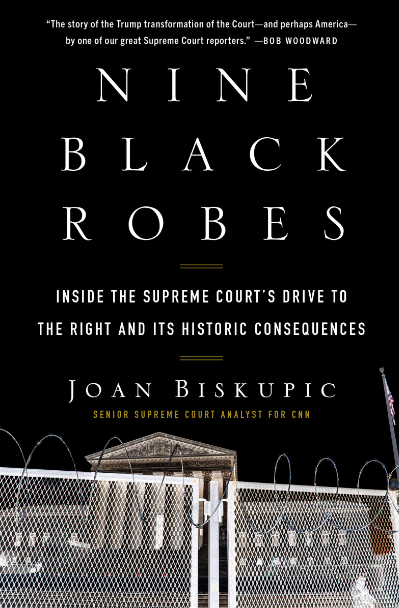
CNN Senior Supreme Court Analyst Joan Biskupic provides an urgent and inside look at the history-making era in the Supreme Court during the Trump and post-Trump years, from its seismic shift to the Right to its controversial decisions, including its reversal of Roe v. Wade, based on access to all the key players.
Nine Black Robes displays the inner maneuverings among the Supreme Court justices that led to the seismic reversal of Roe v. Wade and a half century of women’s abortion rights. Biskupic details how rights are stripped away or, alternatively as in the case of gun owners, how rights are expanded. Today’s bench—with its conservative majority—is desperately ideological. The Court has been headed rightward and ensnared by its own intrigues for years, but the Trump appointments hastened the modern transformation. With unparalleled access to key players, Biskupic shows the tactics of each justice and reveals switched votes and internal pacts that typically never make the light of day, yet will have repercussions for generations to come.
Nine Black Robes is the definitive narrative of the country’s highest court and its profound impact on all Americans.
Separated: Inside an American Tragedy
In June 2018, Donald Trump’s most notorious decision as president had secretly been in effect for months before most Americans became aware of the astonishing inhumanity being perpetrated by their own government—the deliberate separation of migrant parents and children at U.S. border facilities. Jacob Soboroff was among the first journalists to expose this reality after seeing firsthand the living conditions of the children in custody. His influential series of reports ignited public scrutiny that contributed to the president reversing his own policy and earned Soboroff the Cronkite Award for Excellence in Political Broadcast Journalism and, with his colleagues, the 2019 Hillman Prize for Broadcast Journalism.
But beyond the headlines, the complete, multilayered story lay untold. How, exactly, had such a humanitarian tragedy—now deemed “torture” by physicians—happened on American soil? Most important, what has been the human experience of those separated children and parents?
Soboroff has spent the past two years reporting the many strands of this complex narrative, developing sources from within the Trump administration who share critical details for the first time. He also traces the dramatic odyssey of one separated family from Guatemala, where their lives were threatened by narcos, to seek asylum at the U.S. border, where they were separated—the son ending up in Texas, and the father thousands of miles away, in the Mojave desert of central California. And he joins the heroes who emerged to challenge the policy, and who worked on the ground to reunite parents with children.
In this essential reckoning, Soboroff weaves together these key voices with his own experience covering this national issue—at the border in Texas, California, and Arizona; with administration officials in Washington, D.C., and inside the disturbing detention facilities. Separated lays out compassionately, yet in the starkest of terms, its human toll, and makes clear what is at stake as America struggles to reset its immigration policies post-Trump.
Stamped from the Beginning: The Definitive History of Racist Ideas in America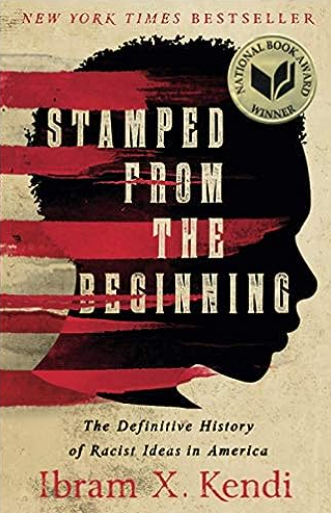
Some Americans cling desperately to the myth that we are living in a post-racial society, that the election of the first Black president spelled the doom of racism. In fact, racist thought is alive and well in America - more sophisticated and more insidious than ever. And as award-winning historian Ibram X. Kendi argues in Stamped from the Beginning, if we have any hope of grappling with this stark reality, we must first understand how racist ideas were developed, disseminated, and enshrined in American society.
In this deeply researched and fast-moving narrative, Kendi chronicles the entire story of anti-Black racist ideas and their staggering power over the course of American history. Stamped from the Beginning uses the life stories of five major American intellectuals - Puritan minister Cotton Mather, Thomas Jefferson, abolitionist William Lloyd Garrison, W.E.B. Du Bois, and legendary activist Angela Davis. - to offer a window into the contentious debates between assimilationists and segregationists and between racists and antiracists.
The Midnight Library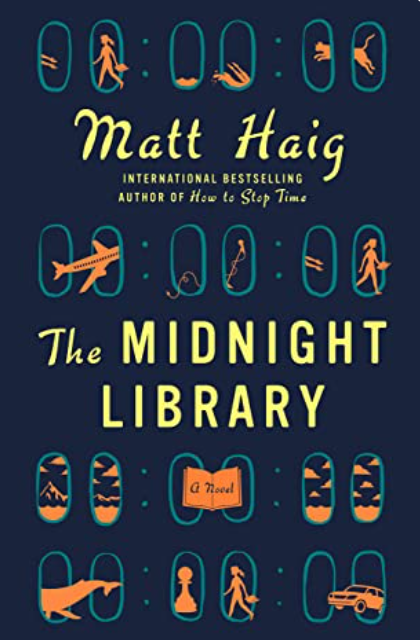
Somewhere out beyond the edge of the universe there is a library that contains an infinite number of books, each one the story of another reality. One tells the story of your life as it is, along with another book for the other life you could have lived if you had made a different choice at any point in your life. While we all wonder how our lives might have been, what if you had the chance to go to the library and see for yourself? Would any of these other lives truly be better?
In The Midnight Library, Matt Haig's enchanting blockbuster novel, Nora Seed finds herself faced with this decision. Faced with the possibility of changing her life for a new one, following a different career, undoing old breakups, realizing her dreams of becoming a glaciologist; she must search within herself as she travels through the Midnight Library to decide what is truly fulfilling in life, and what makes it worth living in the first place.
The Education of a Historian: A Strange and Wonderful Story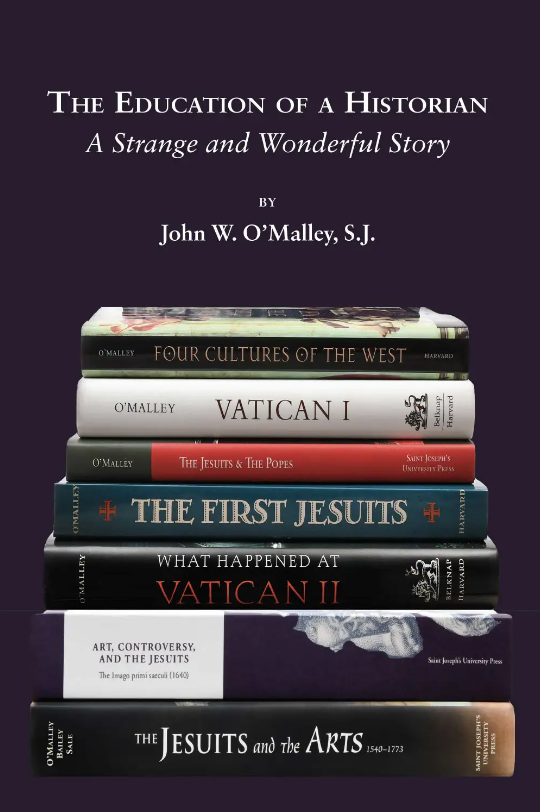
In this autobiographical memoir, John W. O'Malley recounts how his life-story is unintelligible apart from his craft as an historian and from the passion his craft inspired. The narrative is the straightforward story of how a young man of modest background from a small town in Ohio achieved international eminence as a historian of the religious culture of modern Europe. In some detail, therefore, this book tells how four of the twelve monographs that O'Malley published during his career had field-changing influence: Praise and Blame in Renaissance Rome (1979), The First Jesuits (1993), Trent and All That (2000), and What Happened at Vatican II (2008). The book is, however, much more than a tedious review of scholarship. It teaches the reader lessons in historical method and lessons in what good history does for us. They are lessons easy to digest because they are taught not by abstract principles, but by following a historian in action as he learns in fits and starts how to interpret the past in ways that do less injustice to it than other ways.
How the South Won the Civil War: Oligarchy, Democracy, and the Continuing Fight for
the Soul of America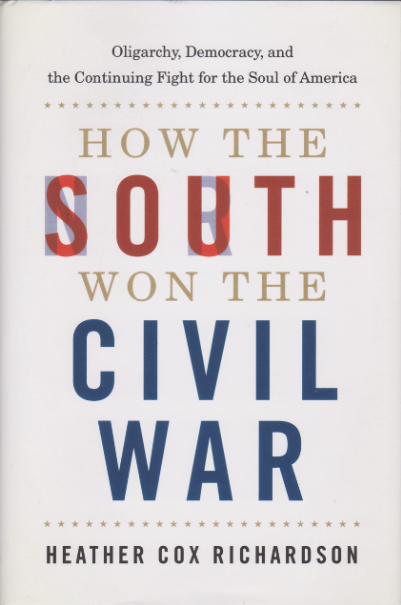
While the North prevailed in the Civil War, ending slavery and giving the country a "new birth of freedom," Heather Cox Richardson argues in this provocative work that democracy's blood-soaked victory was ephemeral. The system that had sustained the defeated South moved westward and there established a foothold. It was a natural fit. Settlers from the East had for decades been pushing into the West, where the seizure of Mexican lands at the end of the Mexican-American War and treatment of Native Americans cemented racial hierarchies. The South and West equally depended on extractive industries-cotton in the former and mining, cattle, and oil in the latter-giving rise a new birth of white male oligarchy, despite the guarantees provided by the 13th, 14th, and 15th Amendments, and the economic opportunities afforded by expansion.
To reveal why this happened, How the South Won the Civil War traces the story of the American paradox, the competing claims of equality and subordination woven into the nation's fabric and identity. At the nation's founding, it was the Eastern "yeoman farmer" who galvanized and symbolized the American Revolution. After the Civil War, that mantle was assumed by the Western cowboy, singlehandedly defending his land against barbarians and savages as well as from a rapacious government. New states entered the Union in the late nineteenth century and western and southern leaders found yet more common ground. As resources and people streamed into the West during the New Deal and World War II, the region's influence grew. "Movement Conservatives," led by westerners Barry Goldwater, Richard Nixon, and Ronald Reagan, claimed to embody cowboy individualism and worked with Dixiecrats to embrace the ideology of the Confederacy.
Richardson's searing book seizes upon the soul of the country and its ongoing struggle to provide equal opportunity to all. Debunking the myth that the Civil War released the nation from the grip of oligarchy, expunging the sins of the Founding, it reveals how and why the Old South not only survived in the West, but thrived.
What the Eyes Don't See: A Story of Crisis, Resistance, and Hope in an American City
Here is the inspiring story of how Dr. Mona Hanna-Attisha, alongside a team of researchers, parents, friends, and community leaders, discovered that the children of Flint, Michigan, were being exposed to lead in their tap water—and then battled her own government and a brutal backlash to expose that truth to the world. Paced like a scientific thriller, What the Eyes Don’t See reveals how misguided austerity policies, broken democracy, and callous bureaucratic indifference placed an entire city at risk. And at the center of the story is Dr. Mona herself—an immigrant, doctor, scientist, and mother whose family’s activist roots inspired her pursuit of justice.
What the Eyes Don’t See is a riveting account of a shameful disaster that became a tale of hope, the story of a city on the ropes that came together to fight for justice, self-determination, and the right to build a better world for their—and all of our—children.
How to Stop Time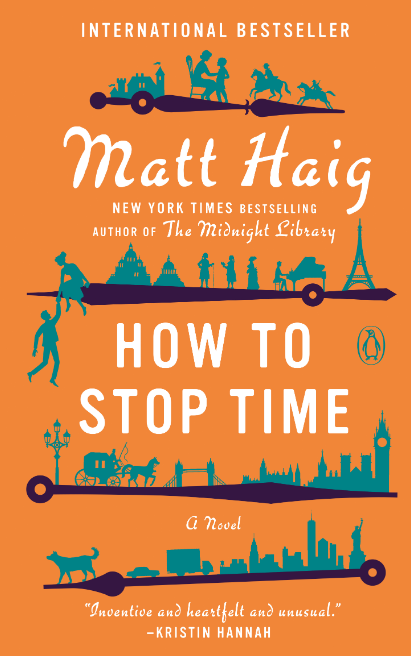
Tom Hazard has just moved back to London, his old home, to settle down and become a high school history teacher. And on his first day at school, he meets a captivating French teacher at his school who seems fascinated by him. But Tom has a dangerous secret. He may look like an ordinary 41-year-old, but owing to a rare condition, he's been alive for centuries. Tom has lived history--performing with Shakespeare, exploring the high seas with Captain Cook, and sharing cocktails with Fitzgerald. Now, he just wants an ordinary life.
Unfortunately for Tom, the Albatross Society, the secretive group which protects people like Tom, has one rule: Never fall in love. As painful memories of his past and the erratic behavior of the Society's watchful leader threaten to derail his new life and romance, the one thing he can't have just happens to be the one thing that might save him. Tom will have to decide once and for all whether to remain stuck in the past, or finally begin living in the present.
How to Stop Time tells a love story across the ages—and for the ages—about a man lost in time, the woman who could save him, and the lifetimes it can take to learn how to live. It is a bighearted, wildly original novel about losing and finding yourself, the inevitability of change, and how with enough time to learn, we just might find happiness.
Old Too Fast Smart Too Late: A Prisoner's Foolish Journey to Wisdom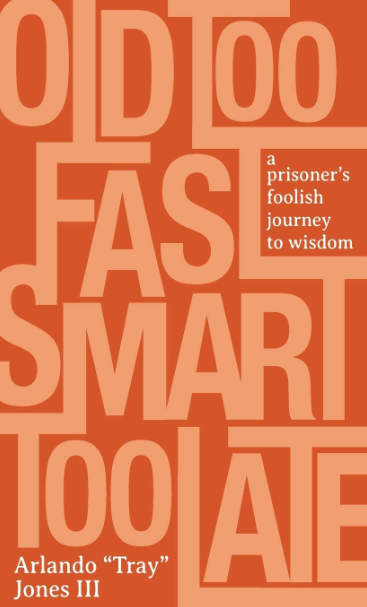
Old Too Fast, Smart Too Late Illustrates the life of an imprisoned person in a country that incarcerates more of its citizens than any other. This book reveals an uncomfortable truth--that prisoners are human beings who struggle to love, live, and die.
Tray's journey through prison is not unique, but Tray's wisdom gleaned through growing old too fast, and getting smart too late, provides insight into prison life through his clarity of mind, humorous heart, and joyous spirit.
Life Sentence: The Brief and Tragic Career of Baltimore's Deadliest Gang Leader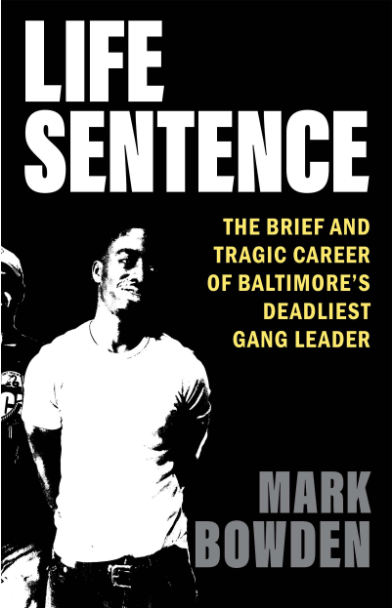
In this unprecedented deep dive into inner-city gang life, Mark Bowden takes readers inside a Baltimore gang, offers an in-depth portrait of its notorious leader, and chronicles the 2016 FBI investigation that landed eight gang members in prison.
Sandtown is one of the deadliest neighborhoods in the world; it earned Baltimore its nickname Bodymore, Murderland, and was made notorious by David Simon’s classic HBO series “The Wire.” Drug deals dominate street corners, and ruthless, casual violence abounds.
Montana Barronette grew up in the center of it all. He was the leader of the gang “Trained to Go,” or TTG, and when he was finally arrested and sentenced to life in prison, he had been nicknamed “Baltimore’s Number One Trigger Puller.” Under Tana’s reign, TTG dominated Sandtown. After a string of murders are linked to TTG, each with dozens of witnesses too intimidated to testify, three detectives set out to put Tana in prison for life. For them, this was never about drugs: It was about serial murder.
Now an acclaimed journalist who spent his youth in the white suburbs of Baltimore, Mark Bowden returns to the city with exclusive access to the FBI files and unprecedented insight into one of the city’s deadliest gangs and its notorious leader. As he traces the rise and fall of TTG, Bowden uses wiretapped drug buys, police interviews, undercover videos, text messages, social media posts, trial transcripts, and his own ongoing conversations with Tana’s family and community to create the most in-depth account of an inner-city gang ever written.
With his signature precision and propulsive narrative, Mark Bowden positions Tana – as a boy, a gang leader, a killer, and now a prisoner – in the context of Baltimore and America, illuminating his path for what it really was: a life sentence.
The 272: The Families who were Enslaved and Sold to Build the American Catholic Church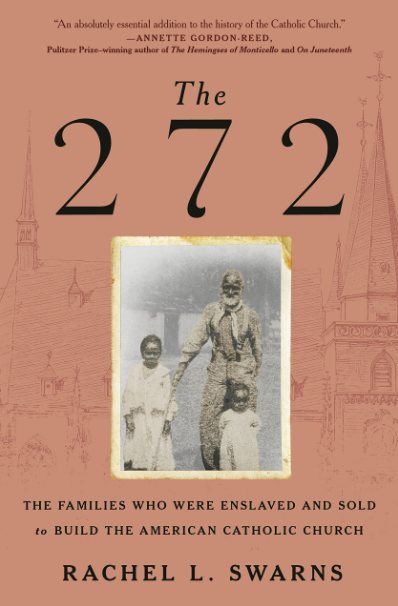
In 1838, a group of America’s most prominent Catholic priests sold 272 enslaved people to save their largest mission project, what is now Georgetown University. In this groundbreaking account, journalist, author, and professor Rachel L. Swarns follows one family through nearly two centuries of indentured servitude and enslavement to uncover the harrowing origin story of the Catholic Church in the United States. Through the saga of the Mahoney family, Swarns illustrates how the Church relied on slave labor and slave sales to sustain its operations and to help finance its expansion.
The story begins with Ann Joice, a free Black woman and the matriarch of the Mahoney family. Joice sailed to Maryland in the late 1600s as an indentured servant, but her contract was burned and her freedom stolen. Her descendants, who were enslaved by Jesuit priests, passed down the story of that broken promise for centuries. One of those descendants, Harry Mahoney, saved lives and the church’s money in the War of 1812, but his children, including Louisa and Anna, were put up for sale in 1838. One daughter managed to escape, but the other was sold and shipped to Louisiana. Their descendants would remain apart until Rachel Swarns’s reporting in The New York Times finally reunited them. They would go on to join other GU272 descendants who pressed Georgetown and the Catholic Church to make amends, prodding the institutions to break new ground in the movement for reparations and reconciliation in America.
Swarns’s journalism has already started a national conversation about universities with ties to slavery. The 272 tells an even bigger story, not only demonstrating how slavery fueled the growth of the American Catholic Church but also shining a light on the enslaved people whose forced labor helped to build the largest religious denomination in the nation.
Teilhard de Chardin: A Book of Hours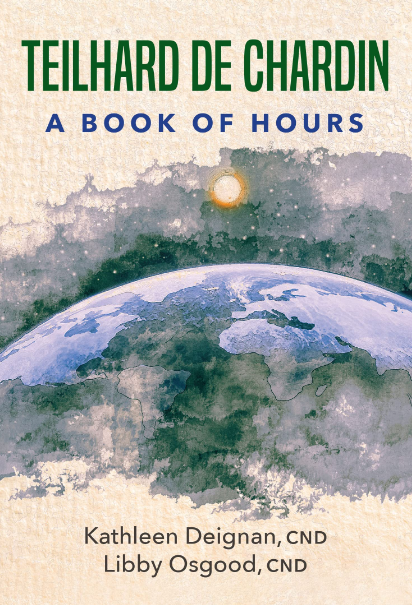
This Book of Hours is divided into eight days, and further subdivided into Dawn, Day, Dusk, and Dark. The first seven days follow weekly evolutionary themes and concludes with an eighth day, “Tomorrow,” to honor Teilhard’s vision of the future.
An Immense World: How Animal Senses Reveal the Hidden Realms Around Us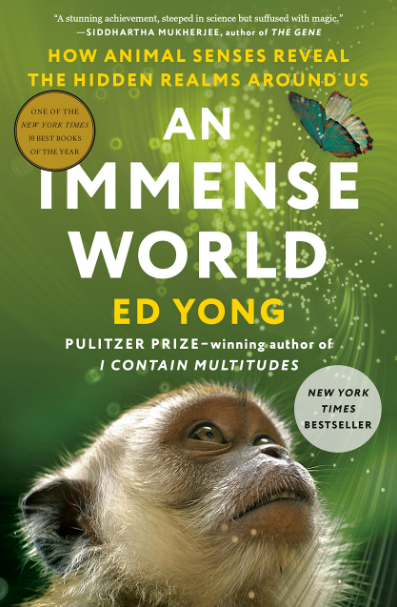
The Earth teems with sights and textures, sounds and vibrations, smells and tastes, electric and magnetic fields. But every kind of animal, including humans, is enclosed within its own unique sensory bubble, perceiving but a tiny sliver of our immense world.
In An Immense World, Ed Yong coaxes us beyond the confines of our own senses, allowing us to perceive the skeins of scent, waves of electromagnetism, and pulses of pressure that surround us. We encounter beetles that are drawn to fires, turtles that can track the Earth’s magnetic fields, fish that fill rivers with electrical messages, and even humans who wield sonar like bats. We discover that a crocodile’s scaly face is as sensitive as a lover’s fingertips, that the eyes of a giant squid evolved to see sparkling whales, that plants thrum with the inaudible songs of courting bugs, and that even simple scallops have complex vision. We learn what bees see in flowers, what songbirds hear in their tunes, and what dogs smell on the street. We listen to stories of pivotal discoveries in the field, while looking ahead at the many mysteries that remain unsolved.
Funny, rigorous, and suffused with the joy of discovery, An Immense World takes us on what Marcel Proust called “the only true voyage . . . not to visit strange lands, but to possess other eyes.”
The Jesuits in the United States: A Concise History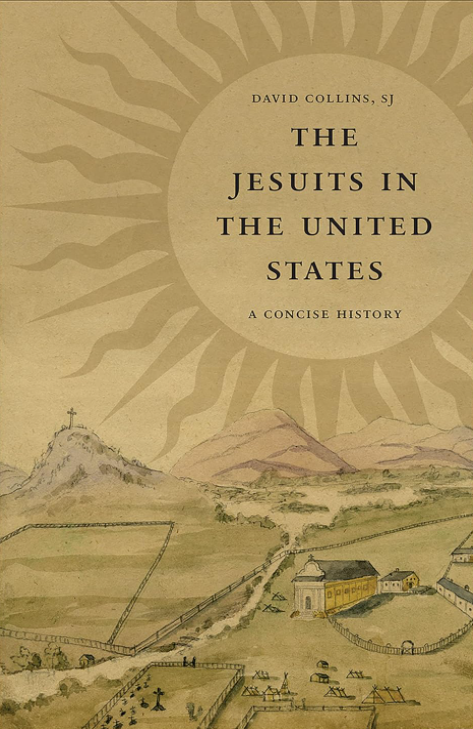
The history of America cannot be told without the history of religion, the history of American religion cannot be told without the history of Catholicism, and the history of Catholicism in America cannot be told without the history of Jesuits in America.
Jesuits in the United States offers a panoramic overview of the Jesuit order in the United States from the colonial era to the present. David J. Collins, SJ, describes the development of the Jesuit order in the US against the background of American religious, cultural, and social history. He covers the papacy's suppression of the order and its restoration period. The author also compares Jesuit activities in the US to those in Europe and, by the twentieth century, to those around the world, as the political and religious connections between the US and the world, especially Latin America, grow.. Collins also reflects on the future of the order in light of its past.
Readers familiar with the Jesuit tradition and those who are new to it will learn from this book's distinctive and modern perspective ― using twenty-first century scholarship on Jesuit slaveholding, the sexual abuse crisis, and other contemporary issues ― on 500 years of Jesuit history in the United States.
Creative Acts for Curious People: How to Think, Create, and Lead in Unconventional
Ways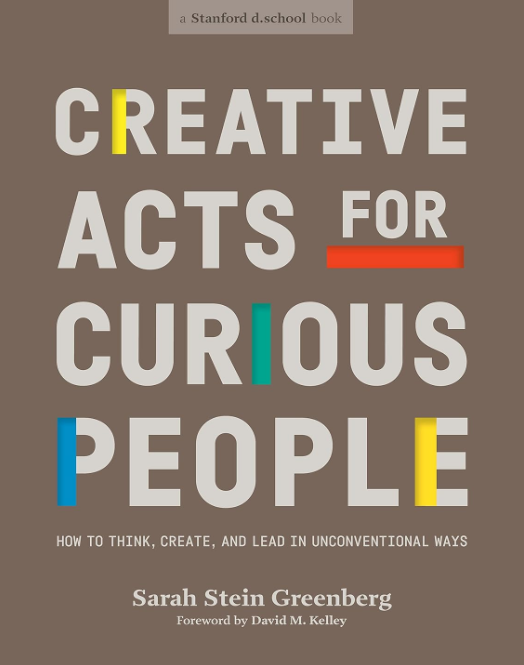
In an era of ambiguous, messy problems—as well as extraordinary opportunities for positive change—it’s vital to have both an inquisitive mind and the ability to act with intention. Creative Acts for Curious People is filled with ways to build those skills with resilience, care, and confidence.
At Stanford University’s world-renowned Hasso Plattner Institute of Design, aka “the d.school,” students and faculty, experts and seekers bring together diverse perspectives to tackle ambitious projects; this book contains the experiences designed to help them do it. A provocative and highly visual companion, it’s a definitive resource for people who aim to draw on their curiosity and creativity in the face of uncertainty. Teeming with ideas about discovery, learning, and leading the way through unknown creative territory, Creative Acts for Curious People includes memorable stories and more than eighty innovative exercises.
Curated by executive director Sarah Stein Greenberg, after being honed in the classrooms of the d.school, these exercises originated in some of the world’s most inventive and unconventional minds, including those of d.school and IDEO founder David M. Kelley, ReadyMade magazine founder Grace Hawthorne, innovative choreographer Aleta Hayes, Google chief innovation evangelist Frederik G. Pferdt, and many more.
To bring fresh approaches to any challenge–world changing or close to home–you can draw on exercises such as Expert Eyes to hone observation skills, How to Talk to Strangers to foster understanding, and Designing Tools for Teams to build creative leadership. The activities are at once lighthearted, surprising, tough, and impactful–and reveal how the hidden dynamics of design can drive more vibrant ways of making, feeling, exploring, experimenting, and collaborating at work and in life. This book will help you develop the behaviors and deepen the mindsets that can turn your curiosity into ideas, and your ideas into action.
The Long Loneliness in Baltimore: Stories Along the Way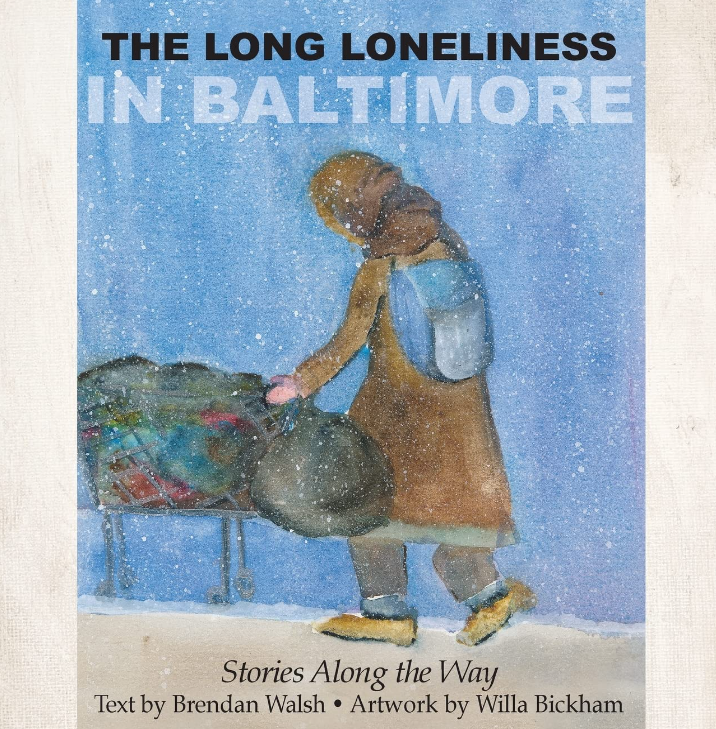
A compilation of essays, stories, poems, parables, and art, The Long Loneliness in Baltimore depicts nearly fifty years worth of experiences in southwest Baltimore (“Sowebo”). Through the establishment of Viva House, Brendan Walsh and Willa Bickham are able to restore hope to the hopeless. Viva House, the temporary home and soup kitchen for those living in Sowebo, provides love and community to many. This eye-opening book gives insight into what is it really like to be one of the “powerless” constantly oppressed by the “powerful.” Coming out in a turbulent time for Baltimore city, this book exposes social injustices while promoting the message that hope will prevail.
The Why Axis: Hidden Motives and the Undiscovered Economics of Everyday Life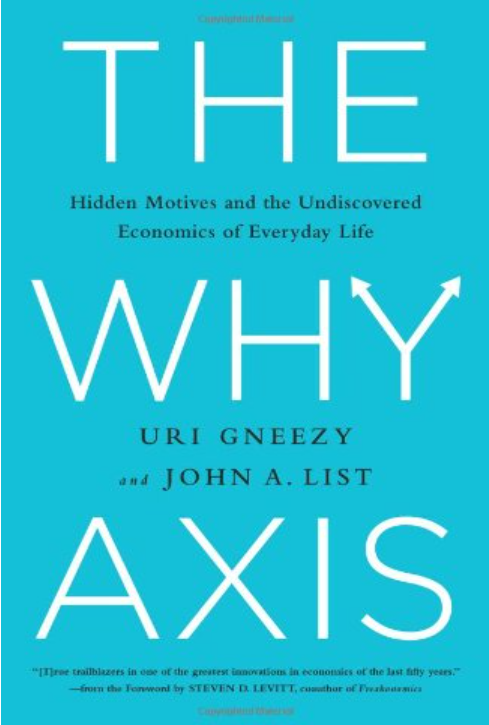
Can economics be passionate? Can it center on people and what really matters to them day-in and day-out. And help us understand their hidden motives for why they do what they do in everyday life?
Uri Gneezy and John List are revolutionaries. Their ideas and methods for revealing what really works in addressing big social, business, and economic problems gives us new understanding of the motives underlying human behavior. We can then structure incentives that can get people to move mountains, change their behavior -- or at least get a better deal.
But finding the right incentive can be like looking for a needle in a haystack. Gneezy and List's pioneering approach is to embed themselves in the factories, schools, communities, and offices where people work, live, and play. Then, through large-scale field experiments conducted "in the wild," Gneezy and List observe people in their natural environments without them being aware that they are observed.
Their randomized experiments have revealed ways to close the gap between rich and poor students; to stop the violence plaguing inner-city schools; to decipher whether women are really less competitive than men; to correctly price products and services; and to discover the real reasons why people discriminate.
To get the answers, Gneezy and List boarded planes, helicopters, trains, and automobiles to embark on journeys from the foothills of Kilimanjaro to California wineries; from sultry northern India to the chilly streets of Chicago; from the playgrounds of schools in Israel to the boardrooms of some of the world's largest corporations. In The Why Axis, they take us along for the ride, and through engaging and colorful stories, present lessons with big payoffs.
Their revelatory, startling, and urgent discoveries about how incentives really work are both revolutionary and immensely practical. This research will change both the way we think about and take action on big and little problems. Instead of relying on assumptions, we can find out, through evidence, what really works. Anyone working in business, politics, education, or philanthropy can use the approach Gneezy and List describe in The Why Axis to reach a deeper, nuanced understanding of human behavior, and a better understanding of what motivates people and why.
Henry Ossawa Tanner: Modern Spirit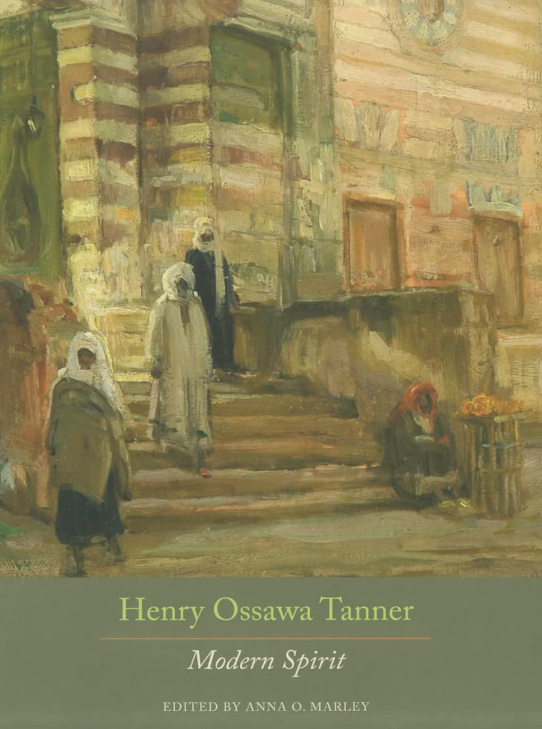
This beautiful book, companion publication to the exhibition of the same name, presents a complex overview of the life and career of the pioneering African American artist Henry O. Tanner (1859–1937). Recognized as the patriarch of African American artists, Tanner forged a path to international success, powerfully influencing younger black artists who came after him. Following a preface by David Driskell, the essays in this book―written by international scholars including Alan Braddock, Michael Leja, Jean-Claude Lesage, Richard Powell, Marc Simpson, Tyler Stovall, and Hélène Valance―explore many facets of Tanner’s life, including his upbringing in post–Civil War Philadelphia, his background as the son of a bishop in the African Methodist Episcopal church, and his role as the first major academically trained African American artist. Additional essays discuss Tanner’s expatriate life in France, his depictions of the Holy Land and North Africa, and the scientific and technical innovations reflected in his oeuvre. Edited and introduced by Anna O. Marley, this volume expands our understanding of Tanner’s place in art history, showing that his status as a painter was deeply influenced by his race but not decided by it.
We Are Beloved: 30 Days with Thea Bowman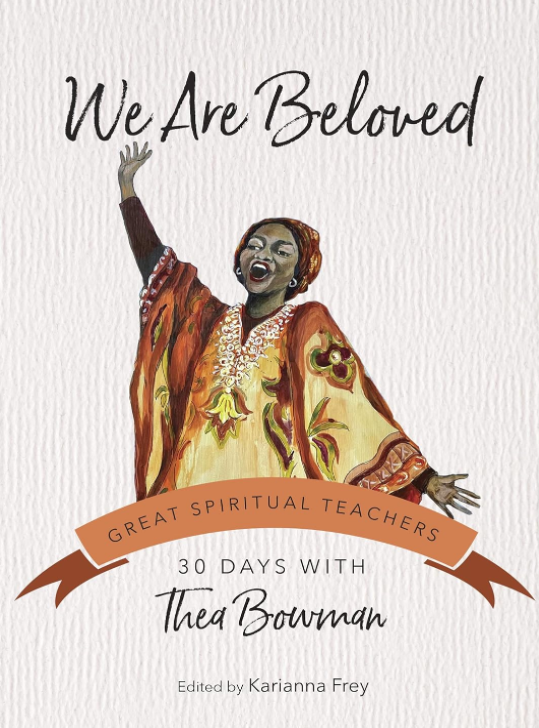
We Are Beloved offers you a personal, thirty-day retreat based on the prophetic words of Servant of God Sr. Thea Bowman, a renowned Black Catholic evangelizer, teacher, writer, and singer. Requiring only a few minutes each day, We Are Beloved allows you to reflect deeply on your fundamental need for belonging, the healing community offered by the Church, and the challenge to welcome all people in the Body of Christ.
We Are Beloved offers selections from four decades of Bowman’s writings, reflections, presentations, and interviews. Bowman has gained attention in the last several years: her cause for canonization was endorsed in 2018 and the 2020 national reckoning with racism highlighted her as one of the prophetic voices in the Church that have been marginalized.
When she joined the Franciscan Sisters of Perpetual Adoration in 1952, Bowman was the first Black sister in the community. Throughout her ministry, she highlighted the need to make Black Americans feel more welcome in Catholic Church. In her powerful testimonies that included gospel singing, preaching, and storytelling, she honored the richness of diverse communities and encouraged people of all races to find joy in unity.
We Are Beloved offers thirty days of brief morning meditations, mantras for use throughout the day, and night prayers to focus your thoughts at the day’s end. This simple book is the perfect prayer companion for busy people who want to root their spiritual practice in Bowman’s vibrant vision of joy in unity. Reflecting perceptively on the dignity of all people, Bowman also encourages you to root out sources of division in your life and calls you to continual conversion.
Each book in the Great Spiritual Teachers series provides a month of daily readings from one of Christianity's most beloved spiritual guides. These easy-to-use books are the perfect prayer companion for busy people who want to root their spiritual practice in the solid ground of these great spiritual teachers.
Farm Work by Jamie Wyeth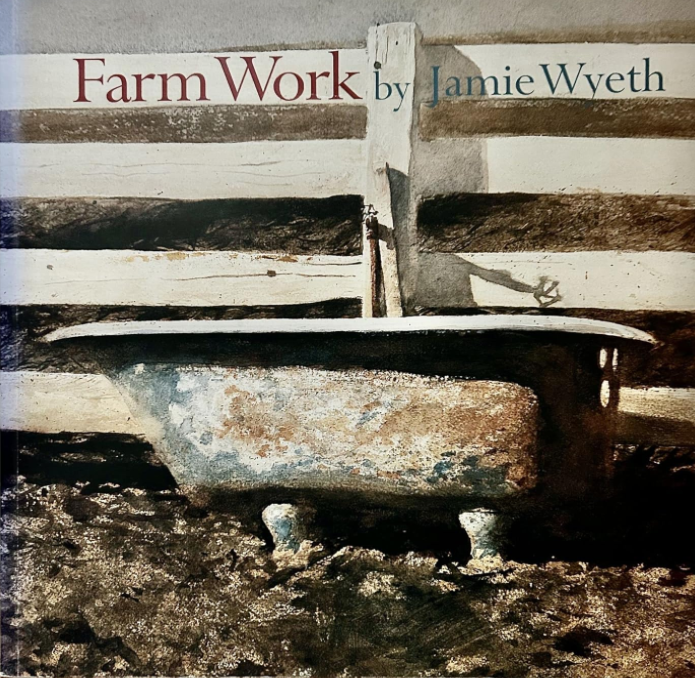
Farms have long provided rich sources of imagery for Jamie Wyeth. This book includes five decades of his lively depictions of farm animals, equipment, and the surrounding landscape.
Wyeth’s depictions of farm work and life combine his wit, artistry and sense of wonder. His earliest farm works were painted as a teenager on trips to the Olson farm in Maine, made famous by his father Andrew. In Chadds Ford during the same years, he made countless visits to a nearby farm. Since the late 1960s, his own farm on the Brandywine, Point Lookout, has been the primary site of inspiration for his subjects.
The Wandering Mind: What Medieval Monks Tell Us About Distraction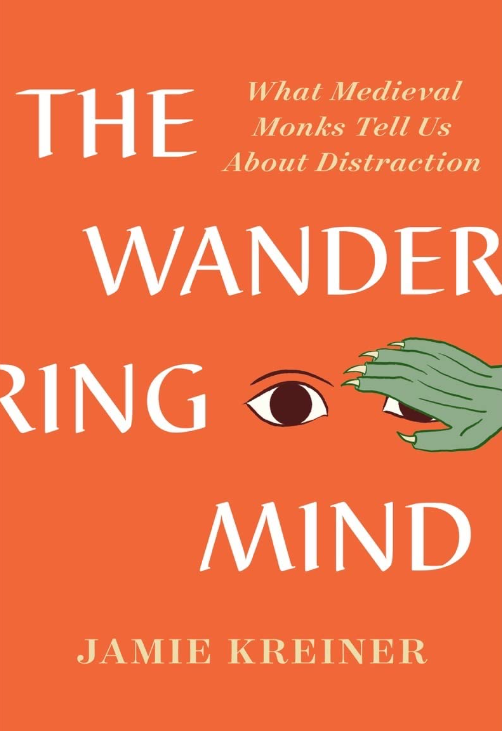
The digital era is beset by distraction, and it feels like things are only getting worse. At times like these, the distant past beckons as a golden age of attention. We fantasize about escaping our screens. We dream of recapturing the quiet of a world with less noise. We imagine retreating into solitude and singlemindedness, almost like latter-day monks.
But although we think of early monks as master concentrators, a life of mindfulness did not, in fact, come to them easily. As historian Jamie Kreiner demonstrates in The Wandering Mind, their attempts to stretch the mind out to God―to continuously contemplate the divine order and its ethical requirements―were all-consuming, and their battles against distraction were never-ending. Delving into the experiences of early Christian monks living in the Middle East, around the Mediterranean, and throughout Europe from 300 to 900 CE, Kreiner shows that these men and women were obsessed with distraction in ways that seem remarkably modern. At the same time, she suggests that our own obsession is remarkably medieval. Ancient Greek and Roman intellectuals had sometimes complained about distraction, but it was early Christian monks who waged an all-out war against it. The stakes could not have been higher: they saw distraction as a matter of life and death.
Even though the world today is vastly different from the world of the early Middle Ages, we can still learn something about our own distractedness by looking closely at monks’ strenuous efforts to concentrate. Drawing on a trove of sources that the monks left behind, Kreiner reconstructs the techniques they devised in their lifelong quest to master their minds―from regimented work schedules and elaborative metacognitive exercises to physical regimens for hygiene, sleep, sex, and diet. She captures the fleeting moments of pure attentiveness that some monks managed to grasp, and the many times when monks struggled and failed and went back to the drawing board. Blending history and psychology, The Wandering Mind is a witty, illuminating account of human fallibility and ingenuity that bridges a distant era and our own. 30 black-and-white images throughout.
The Sense of Wonder: Rachel Carson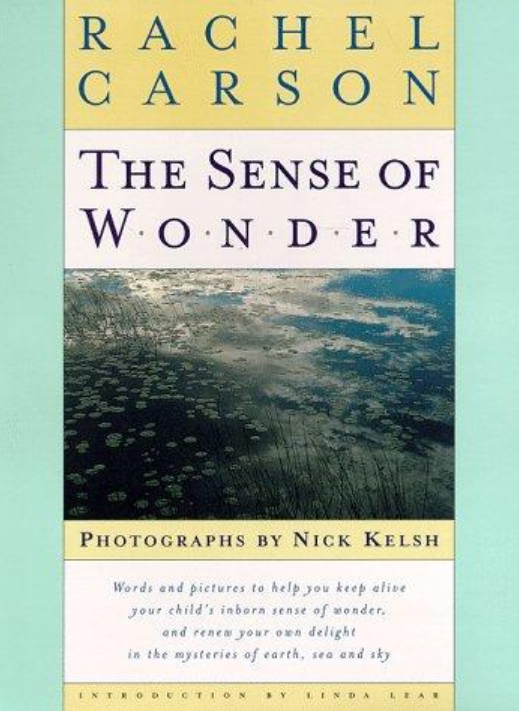
First published more than three decades ago, this reissue of Rachel Carson's award-winning classic brings her unique vision to a new generation of readers. Stunning new photographs by Nick Kelsh beautifully complement Carson's intimate account of adventures with her young nephew, Roger, as they enjoy walks along the rocky coast of Maine and through dense forests and open fields, observing wildlife, strange plants, moonlight and storm clouds, and listening to the "living music" of insects in the underbrush. "If a child is to keep alive his inborn sense of wonder." Writes Carson, "he needs the companionship of at least one adult who can share it, rediscovering with him the joy, excitement and mystery of the world we live in." The Sense of Wonder is a refreshing antidote to indifference and a guide to capturing the simple power of discovery that Carson views as essential to life.
In her insightful new introduction, Linda Lear remembers Rachel Carson's groundbreaking achievements in the context of the legendary environmentalist's personal commitment to introducing young and old to the miracles of nature.
Kelsh's lush photographs inspire sensual, tactile reactions: masses of leaves floating in a puddle are just waiting to be scooped up and examined more closely. An image of a narrow path through the trees evokes the earthy scent of the woods after a summer rain. Close-ups of mosses and miniature lichen fantasy-lands will spark innocent as well as more jaded imaginations. Like a curious child studying things underfoot and within reach, Kelsh's camera is drawn to patterns in nature that too often elude hurried adults, a stand of beech trees in the springtime, patches of melting snow and the ripples from a pebble tossed into a slow-moving stream.
The Sense of Wonder is a timeless volume that will be passed on from children to grandchildren, as treasured as the memory of an early-morning walk when the song of a whippoorwill was heard as if for the first time.
Rothko: The Color Field Paintings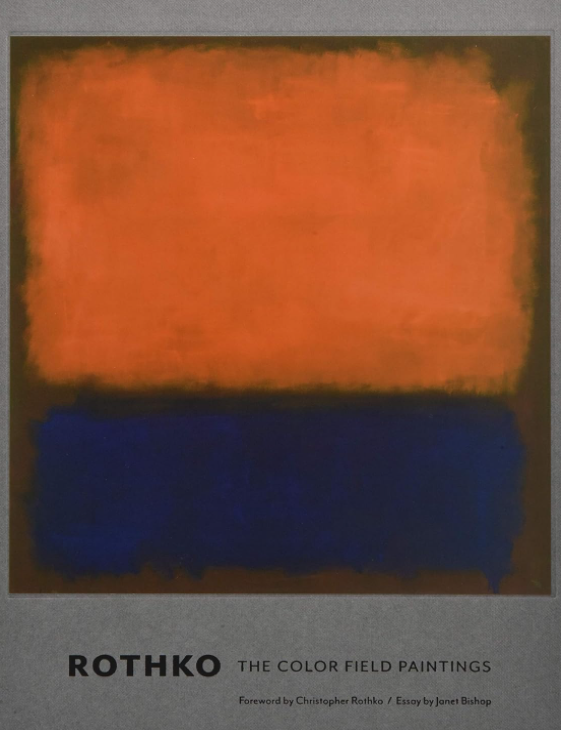
Mark Rothko's iconic paintings are some of the most profound works of twentieth-century Abstract Expressionism. This collection presents beautifully reproduced visuals of fifty large-scale artworks from the American master's color field period (1949–1970) to create a collectible art book to be treasured by Rothko fans and contemporary art enthusiasts.
Accompanying text by Christopher Rothko, the artist's son and chair of the Board of Directors of the Rothko Chapel in Houston, and Janet Bishop, San Francisco Museum of Modern Art curator of painting and sculpture, featuring illuminating details about Rothko's life, influences, and legacy.
Brimming with the emotional power and expressive color of his groundbreaking canvases, this essential volume brings the renowned artist's luminous work to light for both longtime Rothko fans and those discovering his work for the very first time. A textured case and dazzling cover art round out this lavish book that explores a defining moment in art history.
Come Forth: The Promise of Jesus's Greatest Miracles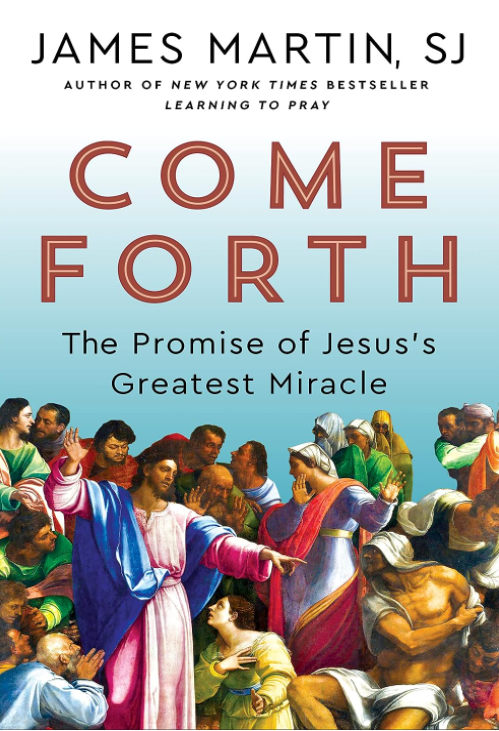
One of America’s most beloved spiritual leaders and the New York Times bestselling author of The Jesuit Guide to (Almost) Everything and Learning to Pray examines one of the most intriguing events in the New Testament—the story of Jesus raising Lazarus from the dead—and explains its significance for us today.
In this wise and compassionate book, Father James Martin, SJ explores the story of Jesus’s greatest miracle—the raising of Lazarus from the dead—and what Jesus means when he calls each of us to “come forth.” Meditatively and carefully, Martin leads us verse by verse, offering profound reflections on Jesus’s lessons on love, family, sadness, frustration, fear, anger, freedom, and joy. Come Forth combines compelling analysis of the biblical text, insights about the historical setting of the story, spiritual lessons for today’s readers, meditations on Lazarus in art and the larger culture, and stories from Martin’s travels through the Holy Land.
As he explores these strands in depth, Martin helps us let go of the limiting beliefs that prevent us from experiencing God’s presence in our lives. We need only to open ourselves to the transformative story of Lazarus and trust that God can use it to free us to experience, like Lazarus, new life.
Moral Grandeur and Spiritual Audacity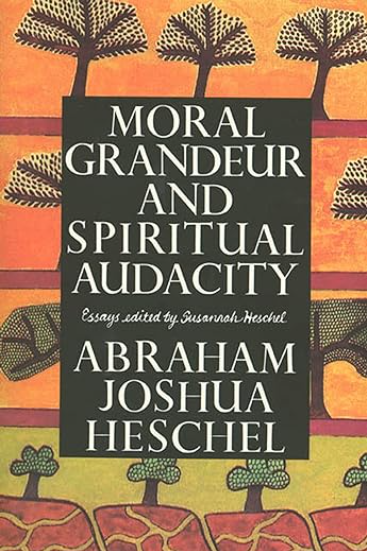
This first collection of Heschel's essays - compiled, edited and with an introduction by his daughter Susannah Heschel, is a stunning reminder of the virtuosity of one of the most well respected minds in Judaic studies.
Shelter: A Black Tale of Homeland, Baltimore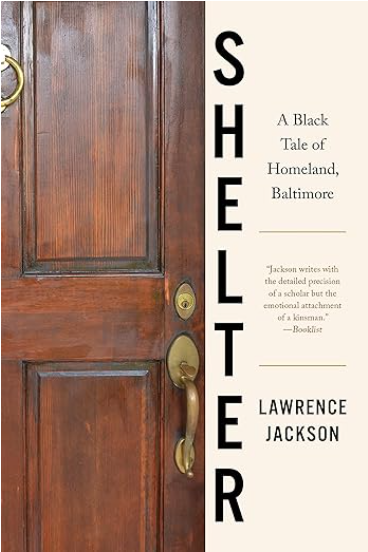
In 2016, Lawrence Jackson accepted a new job in Baltimore, searched for schools for his sons, and bought a house. It would all be unremarkable but for the fact that he had grown up in West Baltimore and now found himself teaching at Johns Hopkins, whose vexed relationship to its neighborhood, to the city and its history, provides fodder for this captivating memoir in essays.
With sardonic wit, Jackson describes his struggle to make a home in the city that had just been convulsed by the uprising that followed the murder of Freddie Gray. His new neighborhood, Homeland―largely White, built on racial covenants―is not where he is “supposed” to live. But his purchase, and his desire to pass some inheritance on to his children, provides a foundation for him to explore his personal and spiritual history, as well as Baltimore’s untold stories. Each chapter is a new exploration: a trip to the Maryland shore is an occasion to dilate on Frederick Douglass’s complicated legacy; an encounter at a Hopkins shuttle-bus stop becomes a meditation on public transportation and policing; and Jackson’s beleaguered commitment to his church opens a pathway to reimagine an urban community through jazz.
Shelter is an extraordinary biography of a city and a celebration of our capacity for domestic thriving. Jackson’s story leans on the essay to contain the raging absurdity of Black American life, establishing him as a maverick, essential writer.
The Injustice of Place: Uncovering the Legacy of Poverty in America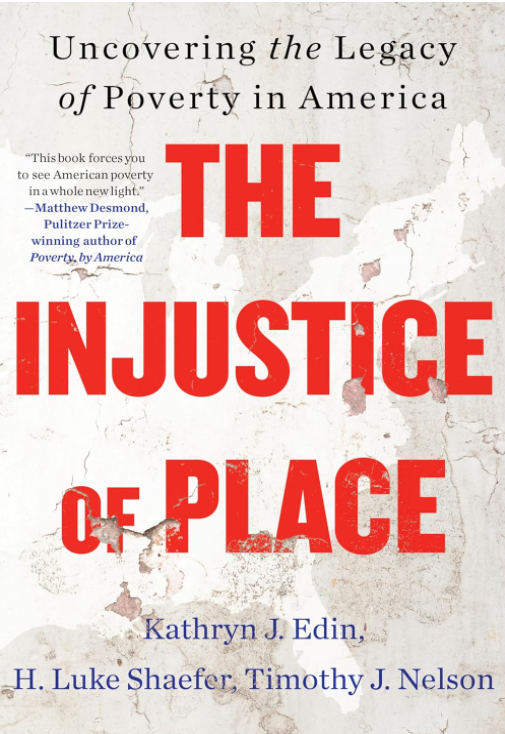
Three of the nation’s top scholars – known for tackling key mysteries about poverty in America – turn their attention from the country’s poorest people to its poorest places. Based on a fresh, data-driven approach, they discover that America’s most disadvantaged communities are not the big cities that get the most notice. Instead, nearly all are rural. Little if any attention has been paid to these places or to the people who make their lives there.
This revelation set in motion a five-year journey across Appalachia, the Cotton and Tobacco Belts of the Deep South, and South Texas. Immersing themselves in these communities, poring over centuries of local history, attending parades and festivals, the authors trace the legacies of the deepest poverty in America—including inequalities shaping people’s health, livelihoods, and upward social mobility for families. Wrung dry by powerful forces and corrupt government officials, the “internal colonies” in these regions were exploited for their resources and then left to collapse.
The unfolding revelation in The Injustice of Place is not about what sets these places apart, but about what they have in common—a history of raw, intensive resource extraction and human exploitation. This history and its reverberations demand a reckoning and a commitment to wage a new War on Poverty, with the unrelenting focus on our nation’s places of deepest need.
Enemy Pie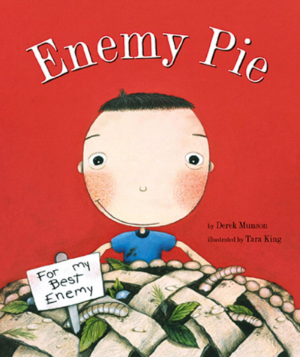
It was the perfect summer. That is, until Jeremy Ross moved into the house down the street and became neighborhood enemy number one. Luckily, Dad had a surefire way to get rid of enemies: Enemy Pie. But part of the secret recipe is spending an entire day playing with the enemy!
In this funny yet endearing children's book, filled with charming illustrations, kids learn about dealing with conflict as well as the difficulties, and ultimate rewards, of making new friends.
The Healing Body: Creative Responses to Illness, Aging, and Affliction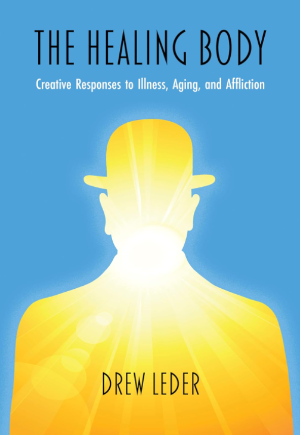
As we grapple with the impacts of an aging population, the millions who struggle with chronic pain and illness, and the unknown number of COVID survivors dealing with long-term impairment, our individual and collective trust in our bodies is shaken. How to adapt? And how to live well, even when medical cure is unavailable? In The Healing Body: Creative Responses to Illness, Aging, and Affliction, philosopher and medical doctor Drew Leder shows how the phenomenology of lived embodiment makes available a variety of existential healing responses to bodily breakdown. Leder also turns to socially marginalized groups—people who have been incarcerated and those deemed “elderly”—to explore how individuals creatively cope with societal as well as physical challenges.
This book forwards current phenomenological research on the body, pain and suffering, disability, and aging. It deeply engages with the legacies of continental philosophy while also drawing insights from the traditions of Hinduism, Buddhism, and Taoism. The Healing Body is a uniquely creative and refreshingly innovative contribution to contemporary philosophy, demonstrating the importance of the philosophical method to the wider culture.
Art of the Chicken: A Master Chef's Paintings, Stories, and Recipes of the Humble
Bird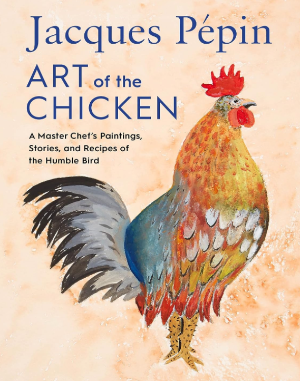
From legendary chef Jacques Pepin, a book celebrating his lifelong love of chickens—featuring dozens of his celebrated paintings, a treasure trove of poignant and often humorous stories, and sprinkled with recipes throughout.
Chicken may not be an extravagant ingredient, but for master chef Jacques Pépin, it is the one he turns to most frequently—to cook and to paint. In this beautifully illustrated book, Jacques reminisces on his life through the lens of the humble bird, from his childhood in rural France, where he chased chickens and watched as his maman turned them into her poulet à la crème, to his demanding apprenticeship and long, illustrious career—cooking Chicken Chasseur for Charles de Gaulle and his family, turning down a chance to work as JFK’s White House Chef for a job at Howard Johnson’s, and appearing on television alongside food-world luminaries like Julia Child. Throughout are Jacques’ favorite chicken and egg recipes, conveyed as if he were sharing them over a dinner table. Most significantly, the book displays dozens of Jacques’ stunning paintings of chickens. “If it clucks or scratches, it’s likely that Jacques has painted it.” This unique book is the next best thing to a visit to Jacques’ home, which would include a tour of his art studio, captivating conversation as he cooks, and a toast with a glass of wine over a simple meal of perfect roast chicken.
Co-Intelligence: Living and Working with AI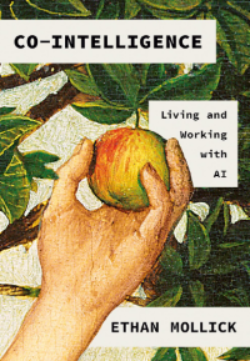
Something new entered our world in November 2022 — the first general purpose AI that could pass for a human and do the kinds of creative, innovative work that only humans could do previously. Wharton professor Ethan Mollick immediately understood what ChatGPT meant: after millions of years on our own, humans had developed a kind of co-intelligence that could augment, or even replace, human thinking. Through his writing, speaking, and teaching, Mollick has become one of the most prominent and provocative explainers of AI, focusing on the practical aspects of how these new tools for thought can transform our world.
In Co-Intelligence, Mollick urges us to engage with AI as co-worker, co-teacher, and coach. He assesses its profound impact on business and education, using dozens of real-time examples of AI in action. Co-Intelligence shows what it means to think and work together with smart machines, and why it's imperative that we master that skill.
Mollick challenges us to utilize AI's enormous power without losing our identity, to learn from it without being misled, and to harness its gifts to create a better human future. Wide ranging, hugely thought-provoking, optimistic, and lucid, Co-Intelligence reveals the promise and power of this new era.
